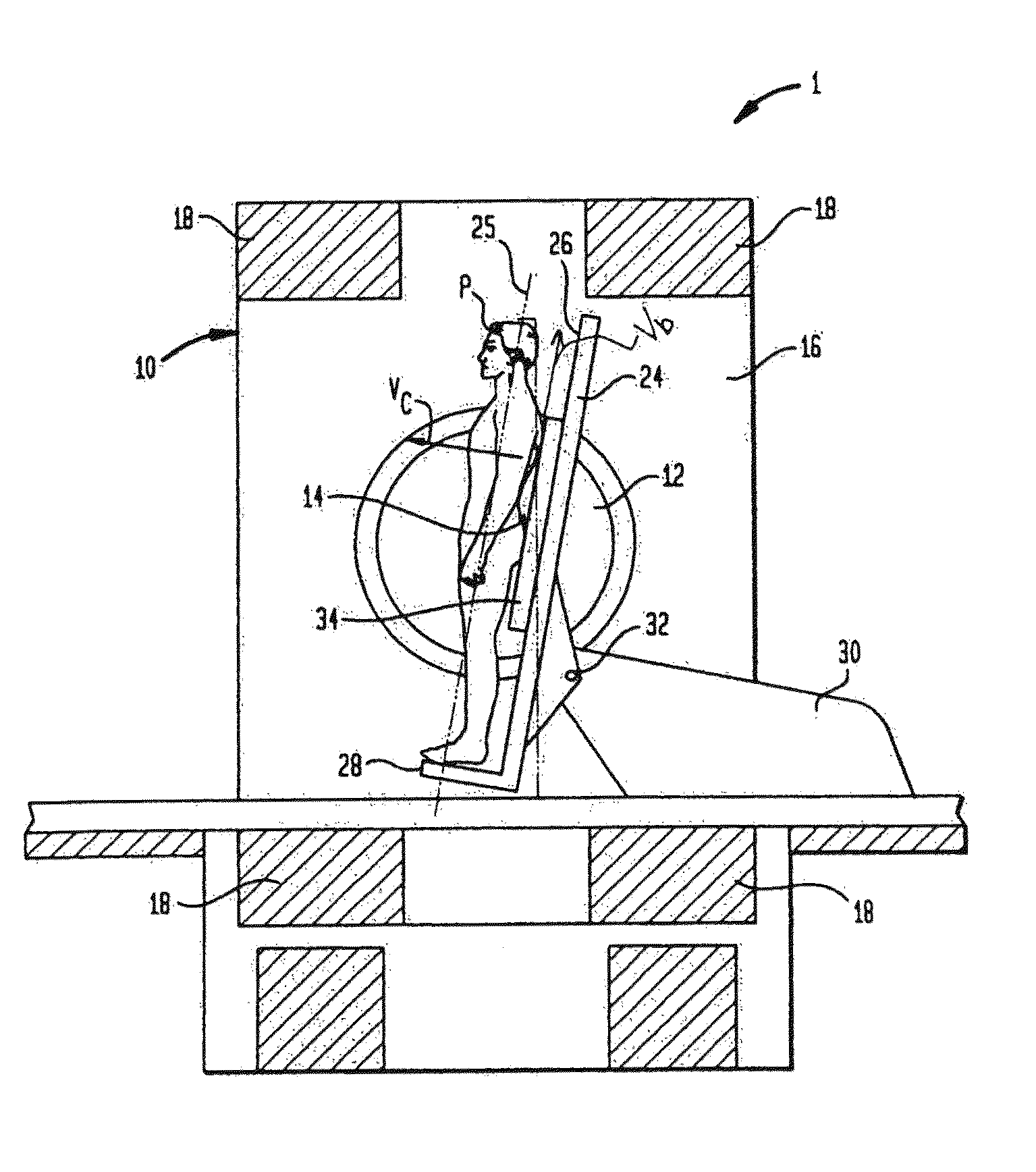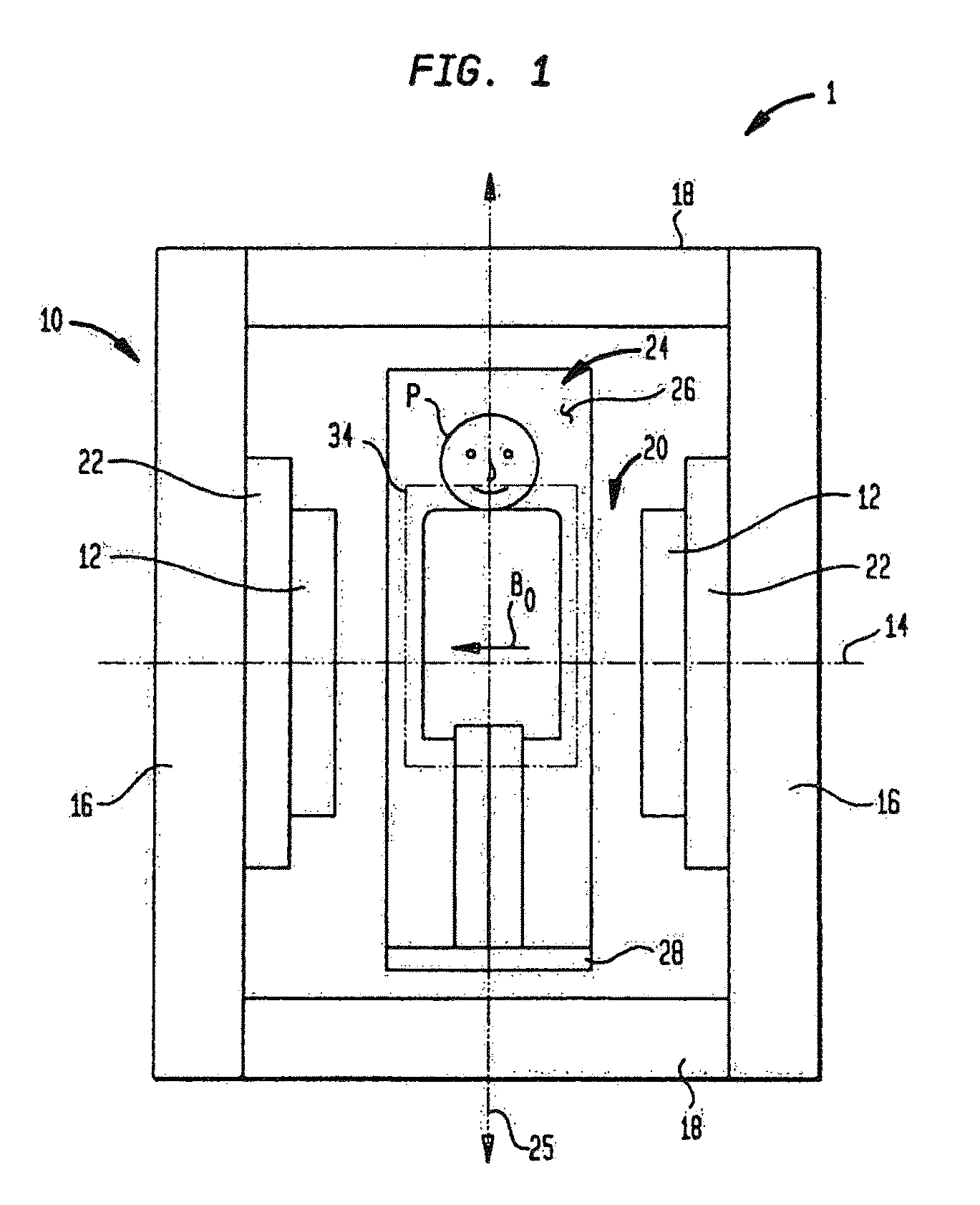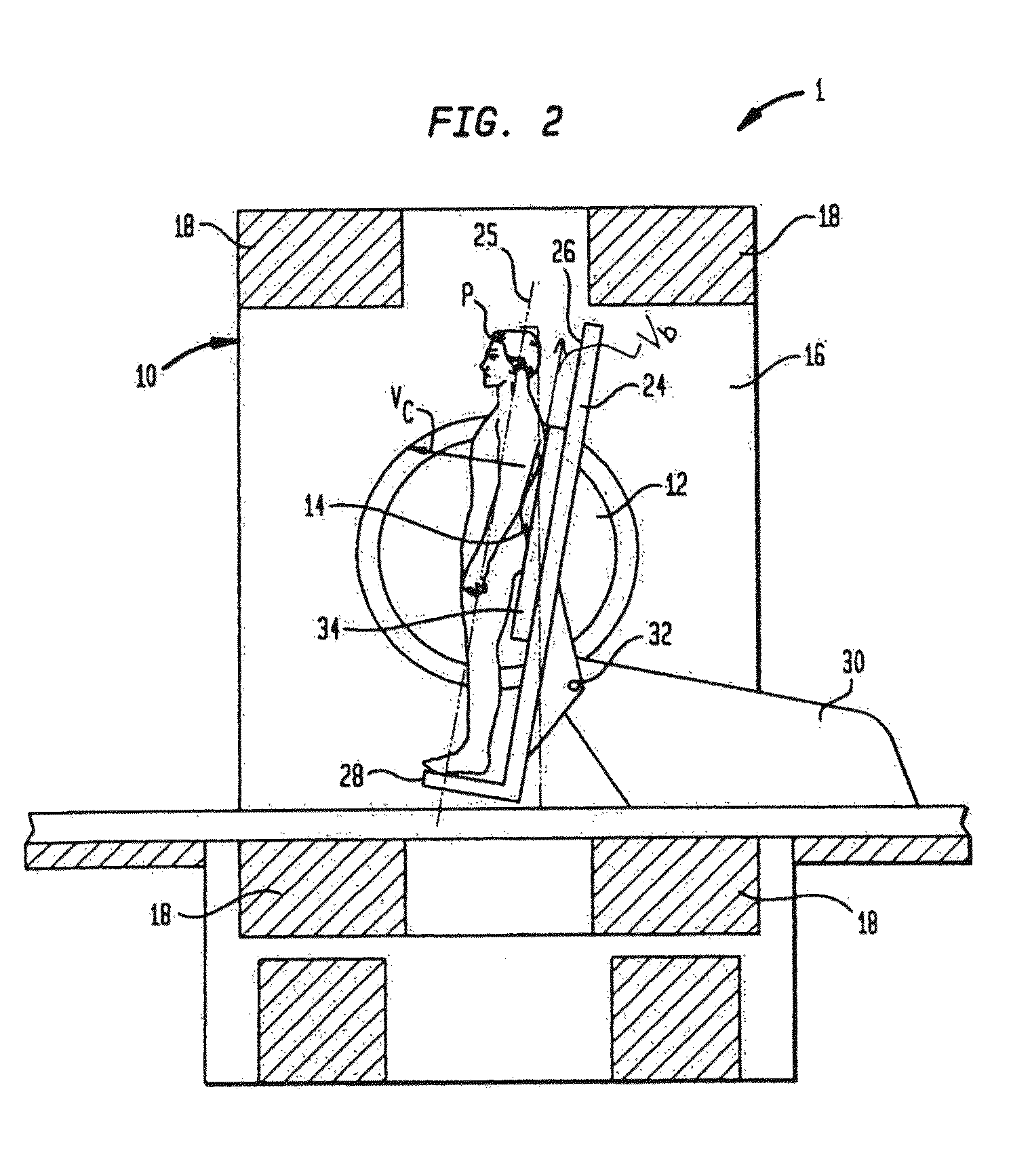Magnetic resonance imaging of the spine to detect scoliosis
- Summary
- Abstract
- Description
- Claims
- Application Information
AI Technical Summary
Benefits of technology
Problems solved by technology
Method used
Image
Examples
Embodiment Construction
[0031]Turning to FIGS. 1 and 2, there is illustrated an apparatus 1 according to one embodiment of the present invention. The apparatus 1 includes a static field magnet having a frame 10 including a pair of poles 12 spaced apart from one another along a horizontal pole axis 14. Frame 10 further includes flux conducting and return members that, in the particular embodiment illustrated, include a pair of sidewalls 16 and columns 18 extending between the sidewalls 16. The particular frame depicted in FIGS. 1 and 2 is generally in accordance with the aforementioned U.S. Pat. No. 6,677,753, (hereinafter “the '753 patent”), although other configurations can be employed. The opposed poles define a patient-receiving space or gap 20 between them. The magnet further includes a source of magnetic flux adapted to direct into and out of the gap through poles 12 so as to form a static magnetic field having a field vector B0 in the horizontal direction, parallel to pole axis 14. In the particular ...
PUM
 Login to View More
Login to View More Abstract
Description
Claims
Application Information
 Login to View More
Login to View More - R&D Engineer
- R&D Manager
- IP Professional
- Industry Leading Data Capabilities
- Powerful AI technology
- Patent DNA Extraction
Browse by: Latest US Patents, China's latest patents, Technical Efficacy Thesaurus, Application Domain, Technology Topic, Popular Technical Reports.
© 2024 PatSnap. All rights reserved.Legal|Privacy policy|Modern Slavery Act Transparency Statement|Sitemap|About US| Contact US: help@patsnap.com










